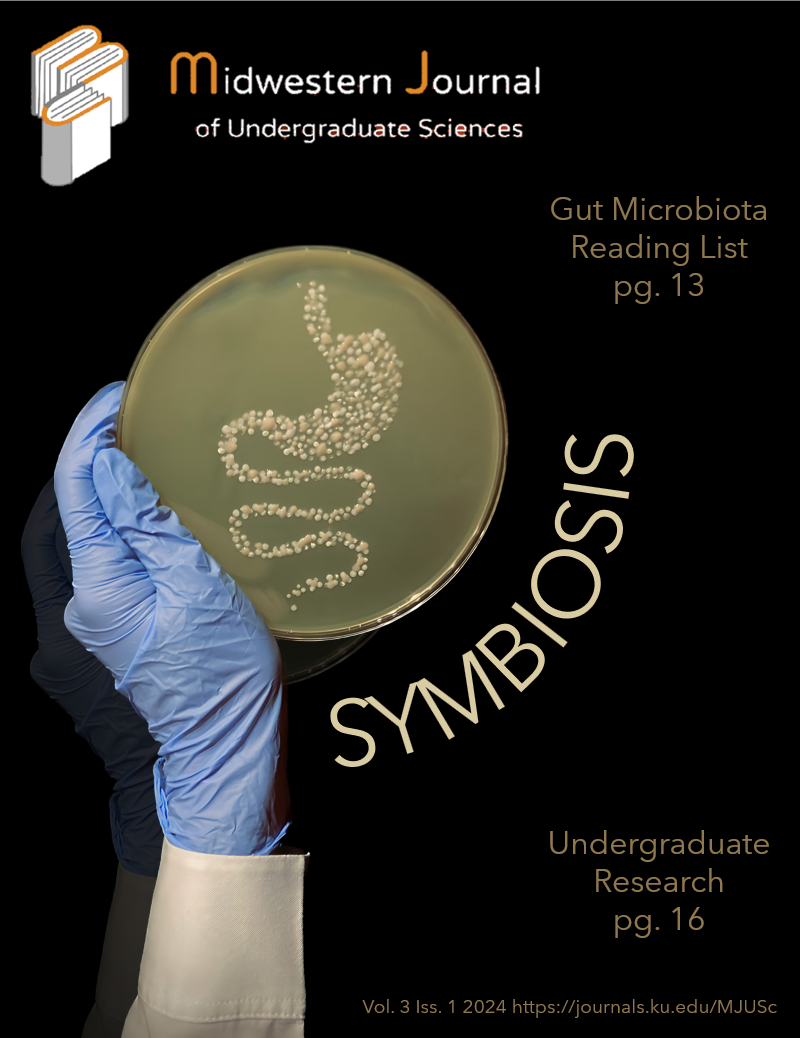Assessing the effects of lactate on the immune responsiveness of T cells in vitro
DOI:
https://doi.org/10.17161/mjusc.v3i1.22313Palabras clave:
T cells, Cancer, Solid tumors, Warburg effect, Lactate, Tumor microenvironment, Jurkat E6.1, Immunology, Cancer immunology, Immune evasion, Human, Flow cytometryResumen
T cells play a key role in protecting the body from cancer. While T cells are normally effective in destroying abnormal cells, there are times when malignancies grow seemingly unchecked by the immune system. Chimeric antigen receptor (CAR)-T cell therapy implements T cells that have been genetically engineered to recognize and kill cancer cells. While CAR-T cell therapy has demonstrated efficacy in treating hematological malignancies, it has shown less promise in treating solid tumors. A possible explanation for the decreased efficacy of T cells and T cell-based immunotherapies in destroying solid tumors may lie in a phenomenon that scientists have long been aware of. The Warburg effect, first described in 1924, is the observation that cancer cells tend to consume significantly more glucose than other cells due to their shift from aerobic respiration to fermentation, resulting in the accumulation of the waste product lactate in the tumor microenvironment. This research investigated the effects of lactate on the immune responsiveness of T cells, using Jurkat E6.1 cells and human primary T cells as models. The effects of lactate on viability, CD3 surface expression, and proliferation were assessed via flow cytometry. While lactate concentration and exposure time had no significant effects on T cell viability, marked decreases in CD3 surface expression and proliferation were observed following exposure to lactate. These findings may shed light on how solid tumors evade immune detection and immunotherapies and have implications for future approaches to treating solid tumors.
Referencias
Cancer statistics. National Cancer Institute Available at: https://www.cancer.gov/about-cancer/understanding/statistics. (Accessed: 22nd March 2024)
Cancer. World Health Organization Available at: https://www.who.int/news-room/fact-sheets/detail/cancer. (Accessed: 22nd March 2024)
Sun, L., Su, Y., Jiao, A., Wang, X. & Zhang, B. T cells in health and disease. Signal Transduct. Target. Ther. 8, 235 (2023).
Pennock, N. D. et al. T cell responses: naive to memory and everything in between. Adv. Physiol. Educ. 37, 273–283 (2013).
Tay, R. E., Richardson, E. K. & Toh, H. C. Revisiting the role of CD4+ T cells in cancer immunotherapy—new insights into old paradigms. Cancer Gene Ther. 28, 5–17 (2021).
Mehrabadi, A. Z. et al. Therapeutic potential of CAR T cell in malignancies: A scoping review. Biomed. Pharmacother. Biomedecine Pharmacother. 146, 112512 (2022).
Yan, T., Zhu, L. & Chen, J. Current advances and challenges in CAR T-Cell therapy for solid tumors: tumor-associated antigens and the tumor microenvironment. Exp. Hematol. Oncol. 12, 14 (2023).
Warburg, O. Uber den Stoffwechsel der Carcinomzelle. Naturwissenschaften 12, 1131–1137 (1924).
Infantino, V., Santarsiero, A., Convertini, P., Todisco, S. & Iacobazzi, V. Cancer Cell Metabolism in Hypoxia: Role of HIF-1 as Key Regulator and Therapeutic Target. Int. J. Mol. Sci. 22, 5703 (2021).
Zhou, D. et al. The significance of glycolysis in tumor progression and its relationship with the tumor microenvironment. Front. Pharmacol. 13, 1091779 (2022).
Luengo, A. et al. Increased demand for NAD+ relative to ATP drives aerobic glycolysis. Mol. Cell 81, 691-707.e6 (2021).
Jones, R. & Morris, M. Monocarboxylate Transporters: Therapeutic Targets and Prognostic Factors in Disease. Clin. Pharmacol. Ther. 100, 454–463 (2016).
Pérez-Tomás, R. & Pérez-Guillén, I. Lactate in the Tumor Microenvironment: An Essential Molecule in Cancer Progression and Treatment. Cancers 12, 3244 (2020).
Hanson, R., Logan, R. & Treml, J. Analyzing Jurkat T Cell Viability and T Cell Receptor Signaling in Tumor Microenvironments. Midwest. J. Undergrad. Sci. 1, 17–22 (2022).
Gottfried, E. et al. Tumor-derived lactic acid modulates dendritic cell activation and antigen expression. Blood 107, 2013–2021 (2006).
Husain, Z., Huang, Y., Seth, P. & Sukhatme, V. P. Tumor-Derived Lactate Modifies Antitumor Immune Response: Effect on Myeloid-Derived Suppressor Cells and NK Cells. J. Immunol. 191, 1486–1495 (2013).
Grist, J. T. et al. Extracellular Lactate: A Novel Measure of T Cell Proliferation. J. Immunol. Baltim. Md 1950 200, 1220–1226 (2018).
Munyon, W. H. & Merchant, D. J. The relation between glucose utilization, lactic acid production and utilization and the growth cycle of L strain fibroblasts. Exp. Cell Res. 17, 490–498 (1959).
Wagner, S., Hussain, M. Z., Hunt, T. K., Bacic, B. & Becker, H. D. Stimulation of fibroblast proliferation by lactate‐mediated oxidants. Wound Repair Regen. 12, 368–373 (2004).
Ghani, Q. P., Wagner, S., Becker, H. D., Hunt, T. K. & Hussain, M. Z. Regulatory Role of Lactate in Wound Repair. in Methods in Enzymology vol. 381 565–575 (Elsevier, 2004).
Masopust, D. & Soerens, A. G. Tissue-Resident T Cells and Other Resident Leukocytes. Annu. Rev. Immunol. 37, 521–546 (2019).
Descargas
Publicado
Número
Sección
Licencia
Derechos de autor 2024 Kaitlyn Sy, Dr. Randall Logan, Dr. Jack Treml

Esta obra está bajo una licencia internacional Creative Commons Atribución-NoComercial 4.0.
© The Author(s)
This work is licensed under a Creative Commons Attribution-NonCommercial 4.0 International license.

